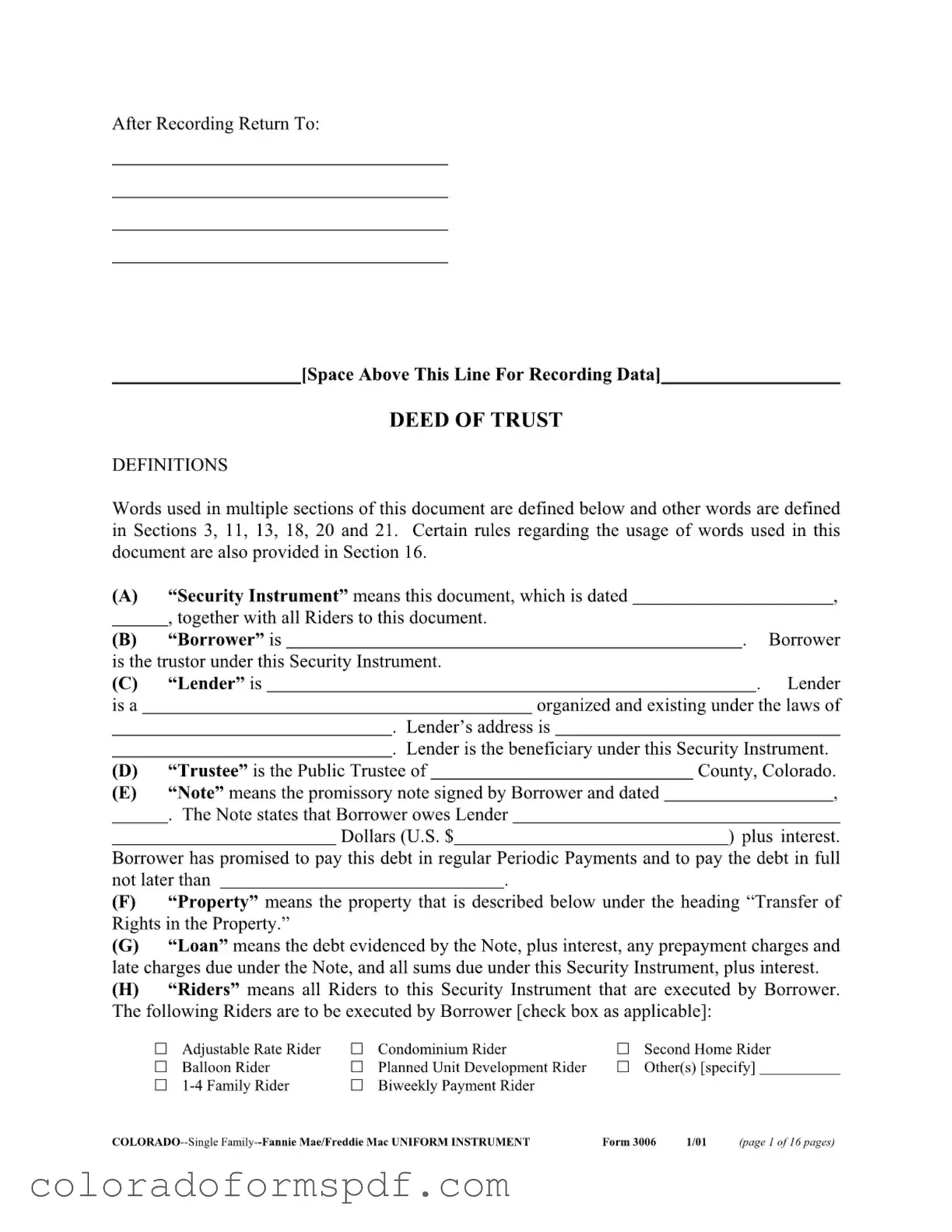The Colorado 3006 form is a critical document used in real estate transactions, particularly in the context of securing loans through a deed of trust. This form serves multiple purposes, primarily establishing the legal framework for the relationship between the borrower, lender, and trustee. It includes essential definitions that clarify the roles of each party involved. For instance, the "Borrower" is identified as the trustor who owes a specified amount to the "Lender," the beneficiary of the security instrument. The form outlines the property being secured, referred to as the "Property," and specifies the financial obligations of the borrower, including principal, interest, and other charges. Additionally, it incorporates various riders that may apply to the loan, such as adjustable-rate or second home riders, which tailor the agreement to the specific needs of the borrower. The document also addresses legal obligations, such as compliance with applicable laws and the payment of community association dues. By defining terms and establishing responsibilities, the Colorado 3006 form ensures clarity and protection for all parties involved in the transaction.
